Featured Brands
Recommended Products
Get free shipping, on most items, with your $50 purchase today! Same day shipping on most orders if placed by 3pm PST.
PLEASE NOTE:
This offer is only available to physical shipping addresses in the 48 continental United States (no PO Boxes), and some exclusions apply.
Oversize Charges
Some large and/or heavy items are subject to additional oversize charges that are separate from standard shipping costs.
Bike Build Process
All bikes are built, tested, tuned, and ready to ride upon shipment. The bike build process typically takes 2-3 days to complete depending on the bike model and the complexity of the build.
Stock Status
Orders for in-stock items placed by 3PM PST usually ship on the same day. Orders that include special-order or backordered items may be subject to shipping delays depending on product availability. Refer to estimated delivery times in cart when selecting shipping options.

Our Gear Advisors are Ready to Help.
Choosing the best hydration pack for short to medium length bike rides can be a daunting task with so many great choices on the market. Whether you are looking for a pack for racing or rides, a 50oz option may be a good fit for your riding.
I’ve spent literally thousands of hours riding and racing endurance events around the world in the Camelbak Chase Bike Vest. This year, I discovered the Osprey Duro 1.5 and wanted to see how it compared to the Camelbak.
Personally, the reason why these packs are attractive is because they are small, I can still access my rear jersey pockets, and I like to have the option to have a bottle on my bike with sports drink in it like GU Roctane for example. I also like these packs because they don’t shift around on your back on bumpy or steep terrain and they breathe really well. The hip pack versus backpack choice is entirely personal. I just prefer a backpack although Jenson has a number of great hip pack options. I’m a professional endurance mountain biker, so I’ve spent a lot of time considering what the best set-up is for speed, function, fit, and durability when it comes to carrying a hydration pack.
For a 2-4 hour ride, the 50oz of water in the hydration pack plus the option of additional water bottle is more than enough. In a race situation, it’s also nice to quickly be able to refill the water bottle at an aide station without having to deal the time penalty of refilling a hydration pack bladder.
Both packs come with a 50 oz bladder. The bladder straw can be moved to the right or left shoulder. The attachment of the bite valve to the pack so the hose doesn't swing around is magnetic for the Osprey and hooks into a clasp for the Camelbak. I preferred the Osprey system for securing the bite valve.
Both bladders are easy to fill. The hose is easily detachable from the bladder. The Camelbak has a lid you unscrew and a handle to hold the bladder as you fill it. The Osprey has a fold at the top and a plastic slide that secures the bladder. You can’t go wrong with either bladder set up.
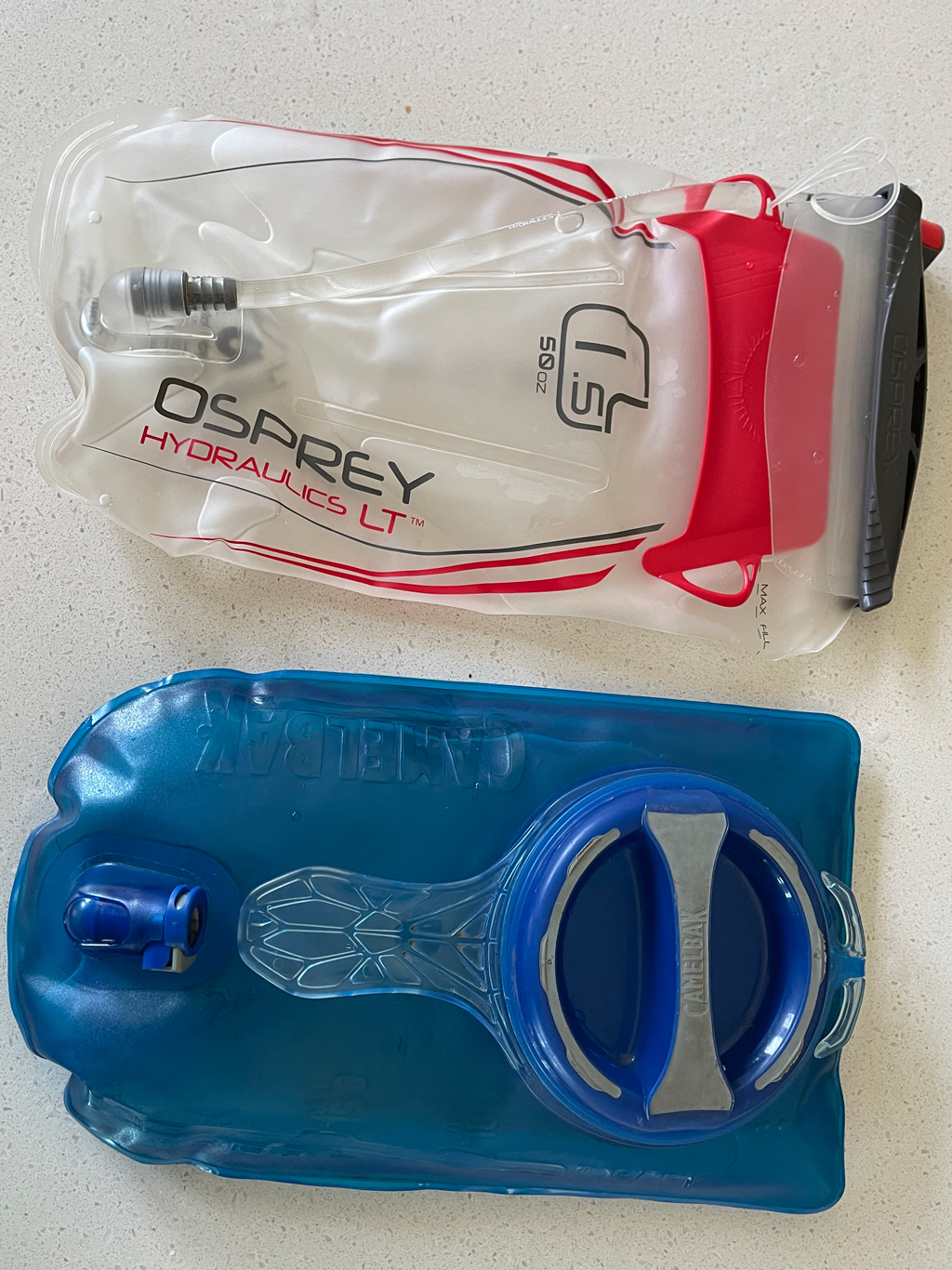
The Camelbak Chase has a larger carrying capacity and more organization for gear than the Osprey Duro. The Osprey Duro is really a minimalist pack. For carrying capacity and organization, the Camelbak wins. The Camelbak has an external pocket where you can carry a rain jacket, some knee pads, or even a small camera tripod. There is also a zippered pocket on the back with space for things like a CO2, small first aid kit, multi-tool, tire levers, and snacks. The Camelbak also has pockets on the front straps. Their 2022 model claims that food and gear will not fall out, although previous versions are not as secure.
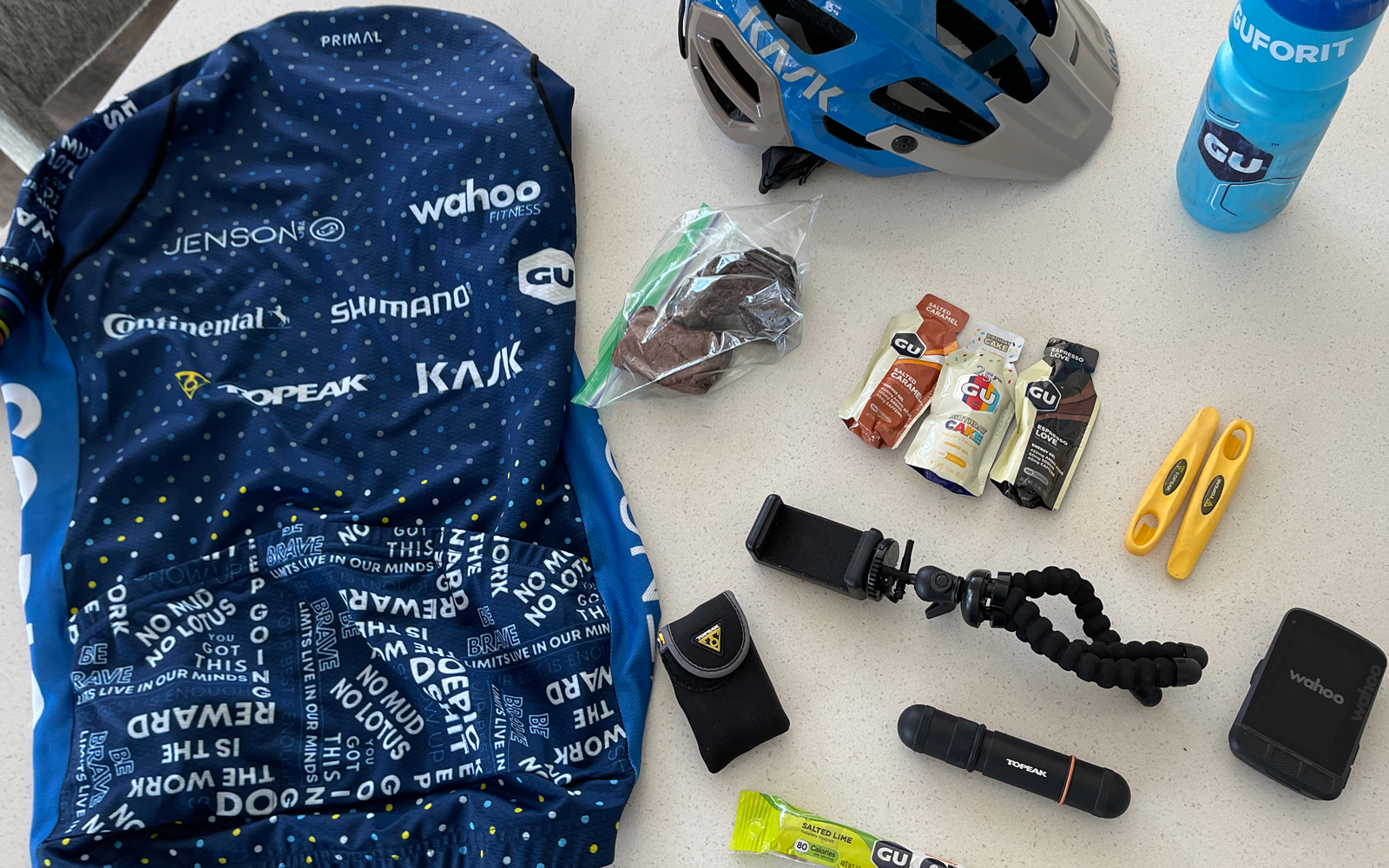
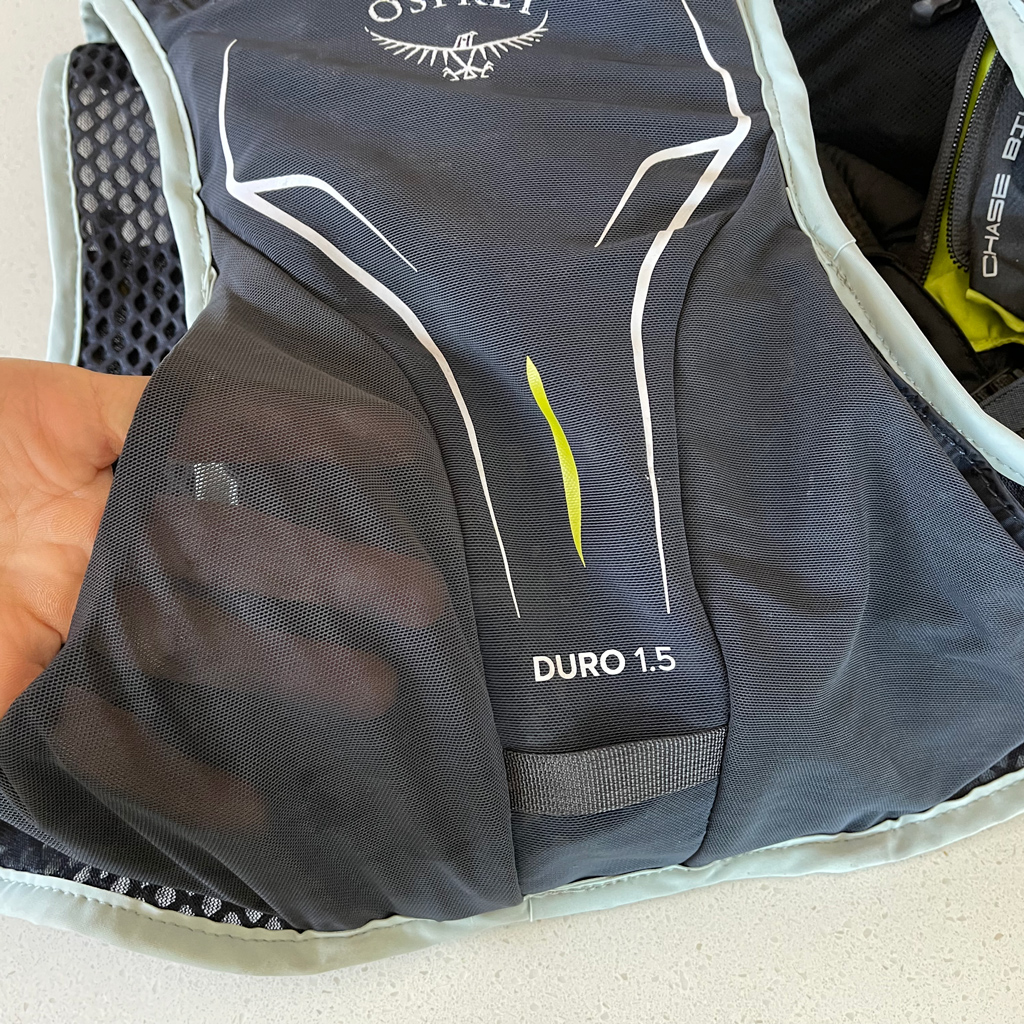
The Osprey Duro does not have an external pocket for storing a jacket or additional bulky items, but it does have a small zippered pocket in the rear for your tools and food. The Osprey has great secure storage on the front shoulder straps as well.
For both packs, I put my small handpump (I use the Topeak Mountain TT) in the large pocket with the bladder. Both packs also have extra small pockets for things like keys and the potential to hang a helmet off of them although there are better-suited packs if you’re schlepping a full-face helmet with you.
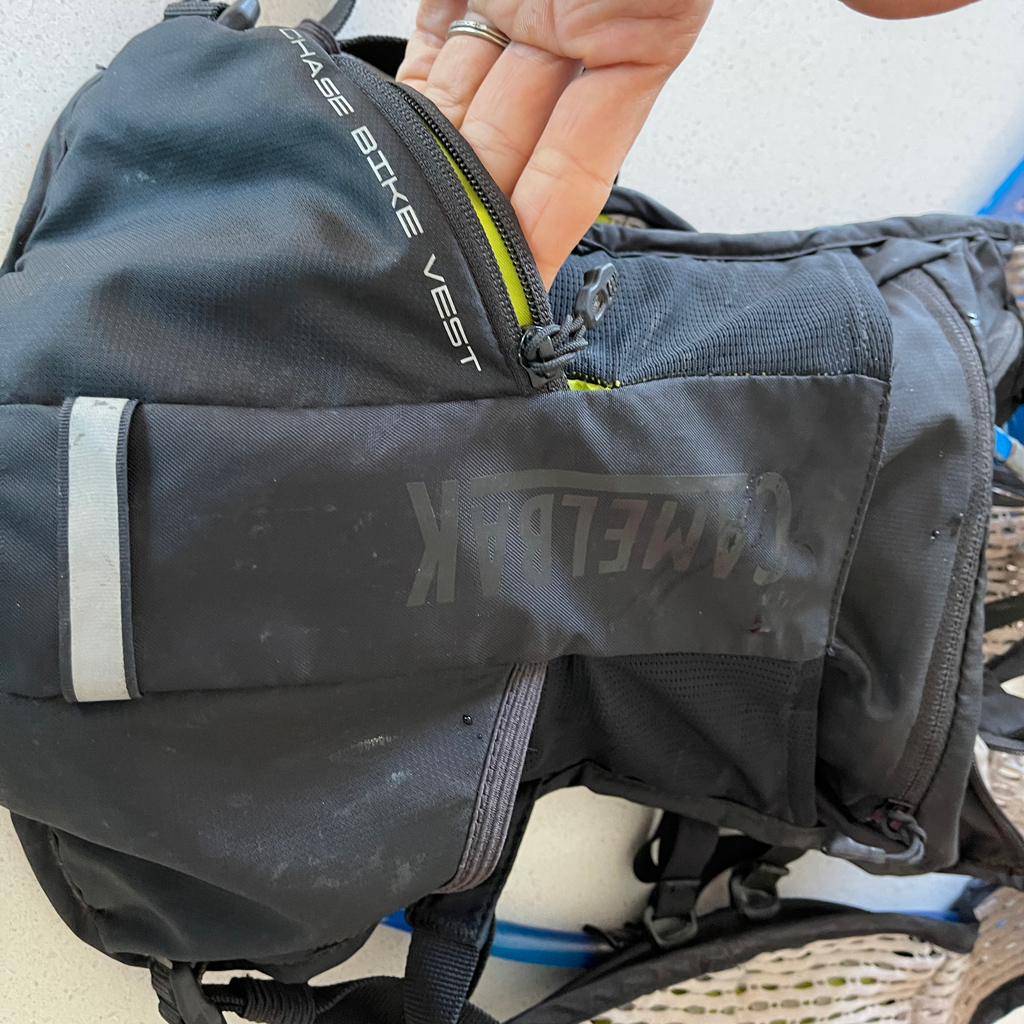
Both packs are designed to mold to your body and with lightweight material. The Osprey has a light, breathable mesh that is uniform throughout the pack. I didn’t encounter any issues with durability, but longer-term testing (and crashing) would be needed to further assess. The Camelbak has thicker material, but has a mesh back that is breathable. The Camelbak has also been crash-tested by me and stands up to some abuse!
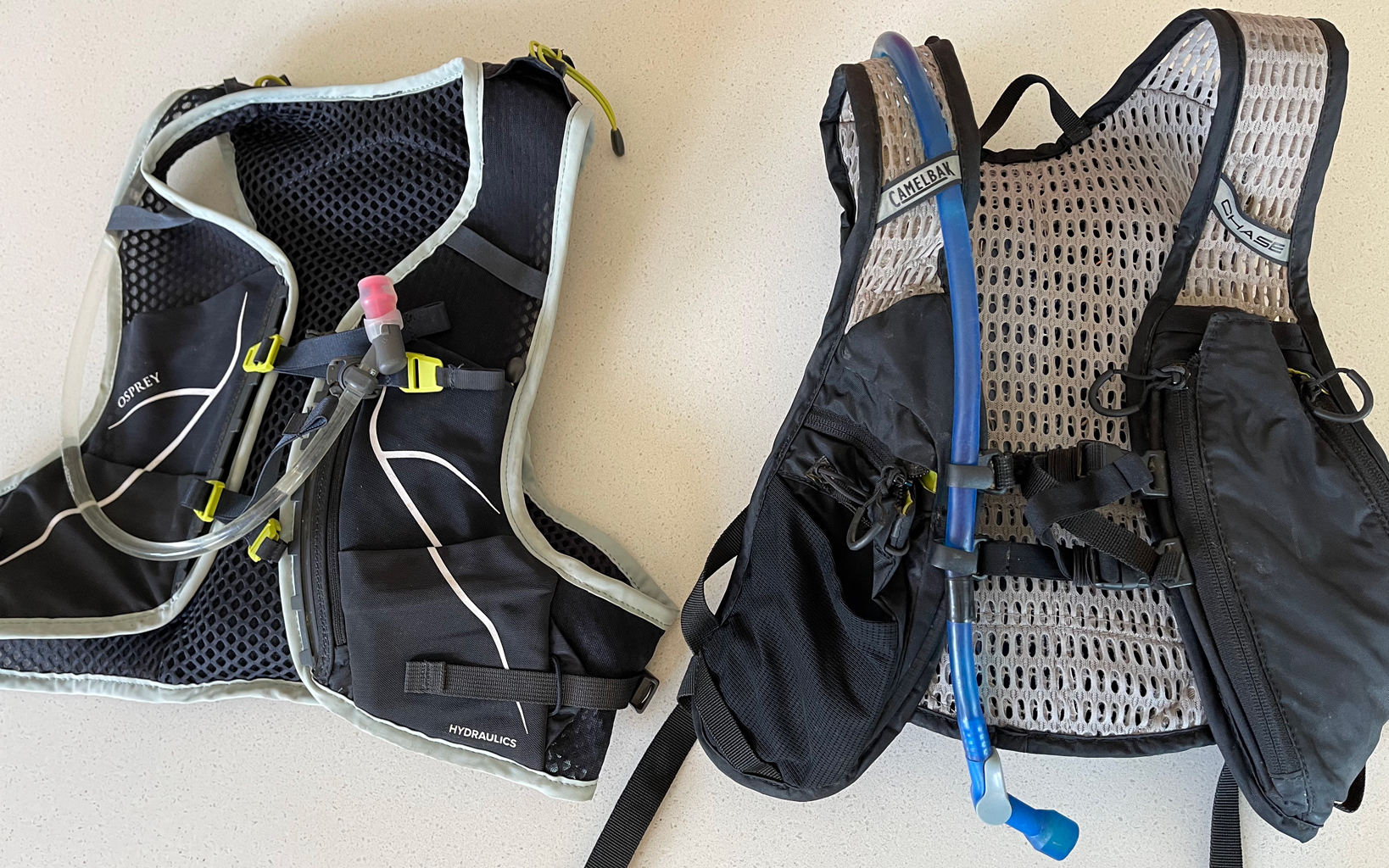
Both packs are equally comfortable and don’t bounce around or throw you off balance on a steep descent. The Camelbak offers women’s sizing with a different shoulder harness and also 2 body sizes. The Osprey comes in one size, and there is also a women’s version called the Dyna. As a small female, I couldn’t tell the difference between the men’s and women’s Camelbaks and both the Osprey and Camelbak were comfortable and fit me well. Additionally, the packs both have easy on the bike adjustment so you can tighten the pack as you drink the water of your hydration bladder.
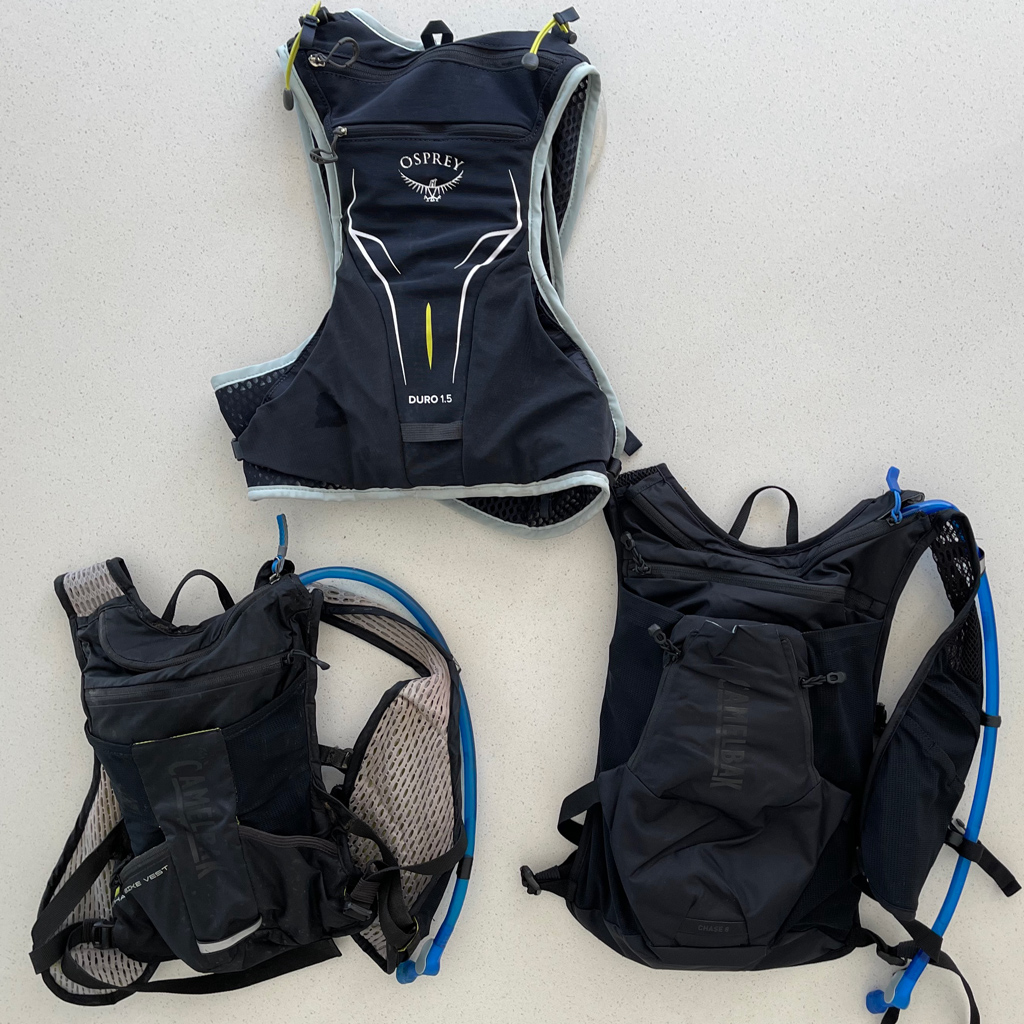
Basically, you’ll be happy with both of these packs. If you plan to carry extra gear, the Camelbak Chase Vest is probably your best bet. If you want the lightest minimal pack, the Osprey is probably the one for you. A quick sidenote is Camelbak also now offers a 70oz version of the Chase Vest. It’s bigger with even more gear organization and pockets, and you can still access your rear pockets.
Sonya Looney is a professional athlete, a podcast host, health coach, business owner, and a wife, and mom of 2. She understands the challenges of prioritization and motivation. She regularly writes about these topics along with mindset, goals, and habits in her weekly newsletter! Let her experiences and expertise be a part of your journey down the path of living a high-performance life!
SHOP NOW
SHIP ALMOST ANYTHING & SAVE
SHOP NOW
SHOP NOW
SHOP NOW
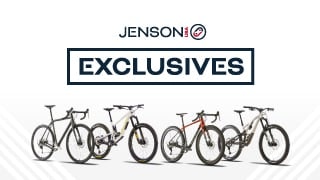



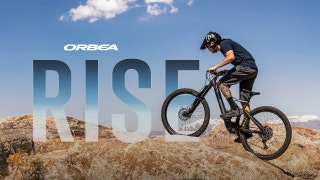
Follow Jensonusa